WORLD TRAVEL NEWS ARTICLE ABOUT LATVIA
THE CITY OF RIGA
Riga is situated on the mouth of the Daugava River and, with a population of almost 800,000 people, it is the biggest city in Latvia.
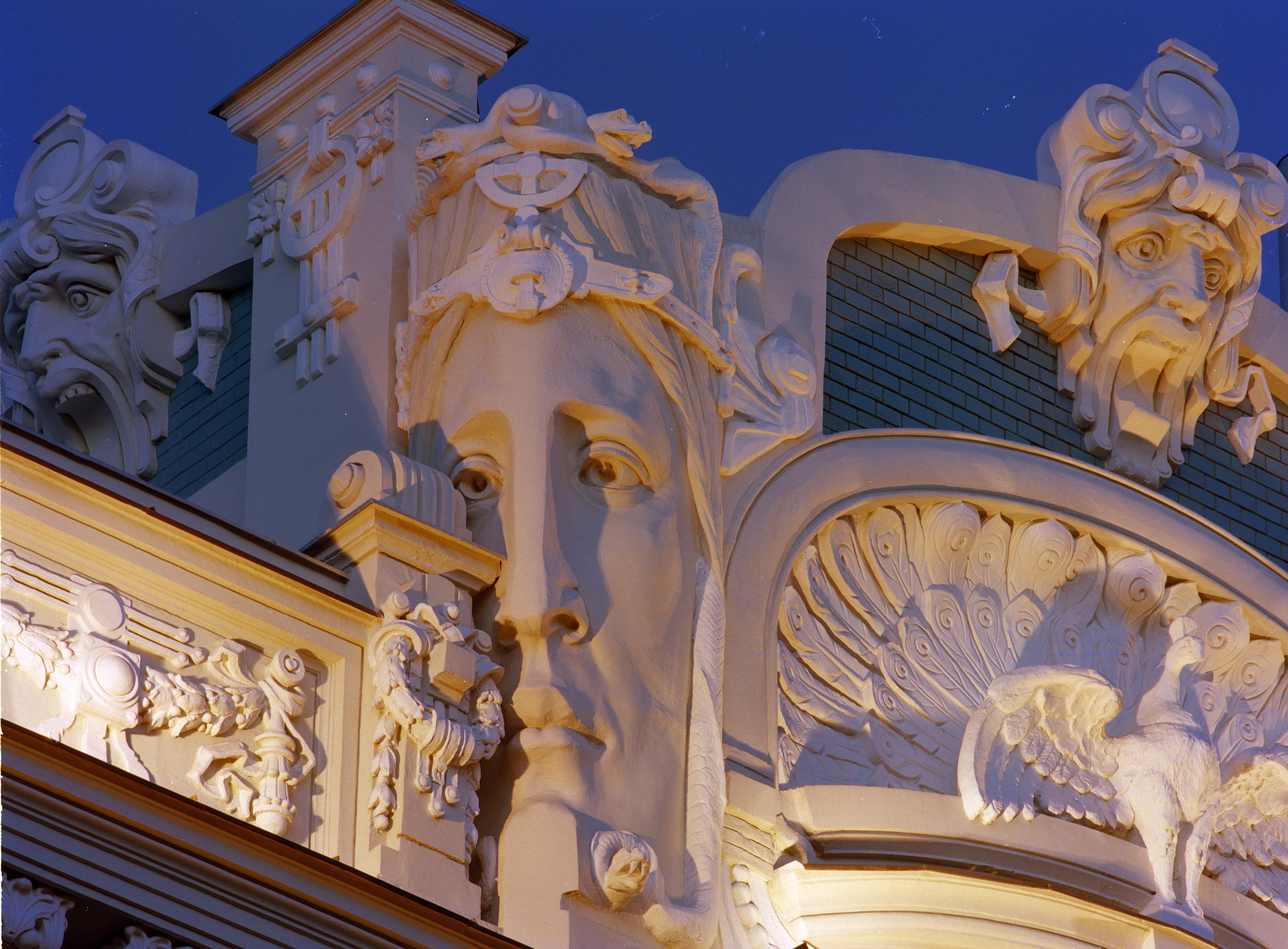
An example of Riga's Art Nouveau
Riga has been named the Capital of Art Nouveau Architecture because of its rich Art Nouveau legacy that is visible all over the city, and it is included on UNESCO’s list of architectural heritage. But that’s just half the story. During the 1980s, the ’Glasnost’ of Mikhail Gorbachev led to the ‘Singing Revolution’, when the Latvian people gathered to give voice to their longing for freedom by singing previously banned national songs. Finally, in 1991, Latvia regained its independence. Today, Riga is constantly being renewed and it has become a modern European city – a centre of culture and international events.
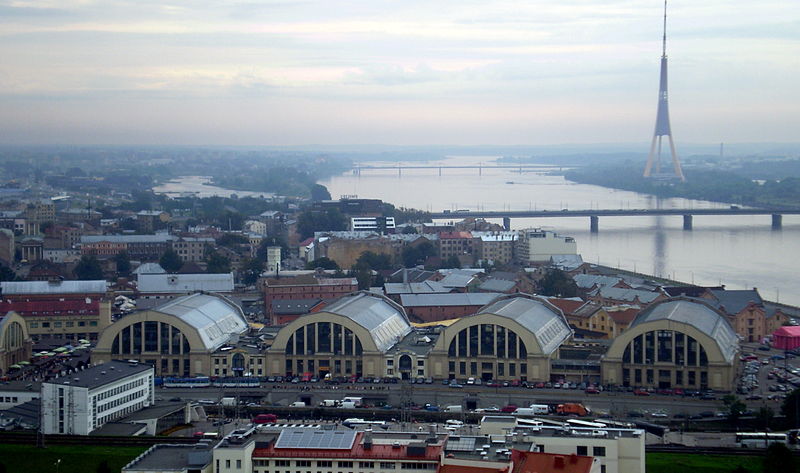
Riga's Central Market (Wikipedia)
In Riga you will find Rīgas Centrāltirgus (Riga’s Central Market), one of the biggest outdoor markets in Europe. Another open-air attraction is the outdoor ethnographic museum, where wooden churches, windmills and other historical buildings from the 16th to the-19th centuries have been moved. Here, you can also find traditional handmade products.
What to see and do in Riga
In 2001, Old Riga celebrated its 800th birthday. The Old Town's first inhabited log building dated back to the 11th century and the it's first German stone building from the 13th century.
Riga is famous for its Art Nouveau architecture. No other European city can boast of so many buildings and architectural ensembles built at the end of the last century, having all the features of the Art Nouveau style.
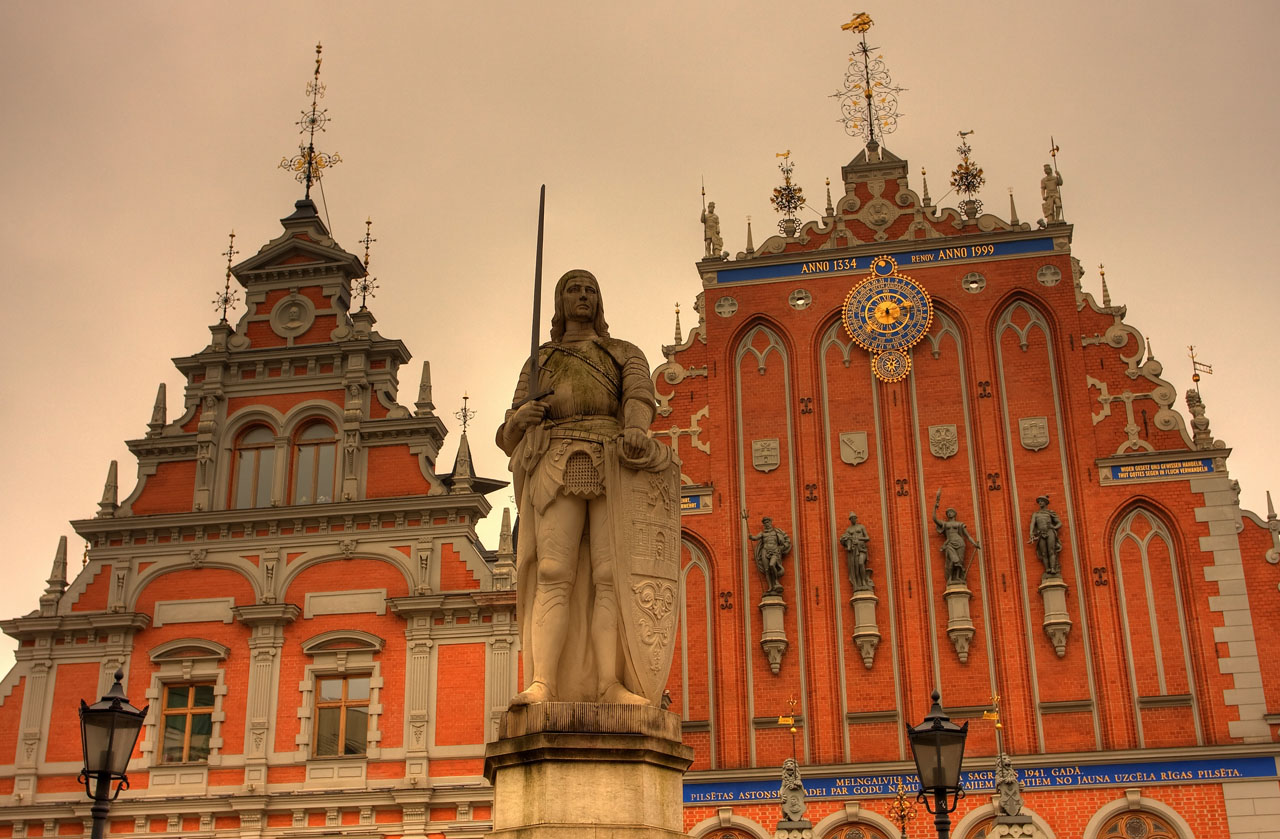
An example of a Riga facade
You can easily spend half a day in Riga’s zoological garden. Entering through the old portico from 1912, you arrive at a bird lake with cormorants and other northern birds. The pride of the zoo is their large herd of kiangs (wild asses from Tibet), which are very rare in the wild; they also have eight species of bears.
The Outdoor Museum covers 100 hectares, with farmsteads, windmills, fishing villages, churches and other historic structures, which have been moved here and preserved for posterity. Watch craftsmen perform various tasks or try some Latvian food and drink in the old inn.

Traditional crafts on show
Constructed in 1999, the LIDO Recreation Centre is one of the biggest and most beautiful log buildings in Europe. It has already become one of the favourite places of family recreation in Riga. The LIDO offers a typical Latvian environment, delicious local delicacies, unfiltered LIDO beer, live music every evening, and celebration of national festivities with gorgeous decorations and concerts!
The celebrated National Opera of Latvia presents an impressive opera and ballet repertoire. In June every year, an opera festival takes place.
Riga Dome Cathedral is considered the largest church in the Baltic, with walls two metres thick. It's 6,000 pipe organ is one of the biggest in Europe.

Riga roof tops in snow. Far left is St.Peter's and second left is The Dome.
St Peter’s Church was first mentioned in 1209; its dramatic history includes a collapsed church tower and several fires. Nowadays, it’s one of the best examples of Gothic architecture in the Baltic Sea region. From the observation platform built on the top of the tower, you can enjoy a wonderful bird’s-eye view of Riga. It is also the venue for various concerts and exhibitions.
Riga’s Occupation Museum was established in 1993, in order to provide information about Latvia and its people under two occupying totalitarian regimes from 1940 to 1991, and to remind the world of the wrongdoings committed by foreign powers against the state and people of Latvia.
Riga has many impressive squares and numerous parks that offer plenty of recreational opportunities for visitors in need of a break or a drink in an outdoor café.
Currency
The Latvian national currency is the Lat (Ls or LVL) –1 Lat = 100 Santims. Major credit cards are widely accepted. For current exchange rates, visit www.xe.com
Shop opening hours / banking
Shops are open Monday to Friday, 10 am to 7 pm; Saturday/Sunday, 11 am to 6 pm. Malls are open 7 days a week, 10 am to 10 pm. Banking hours are weekdays, 9 am to 5 pm.
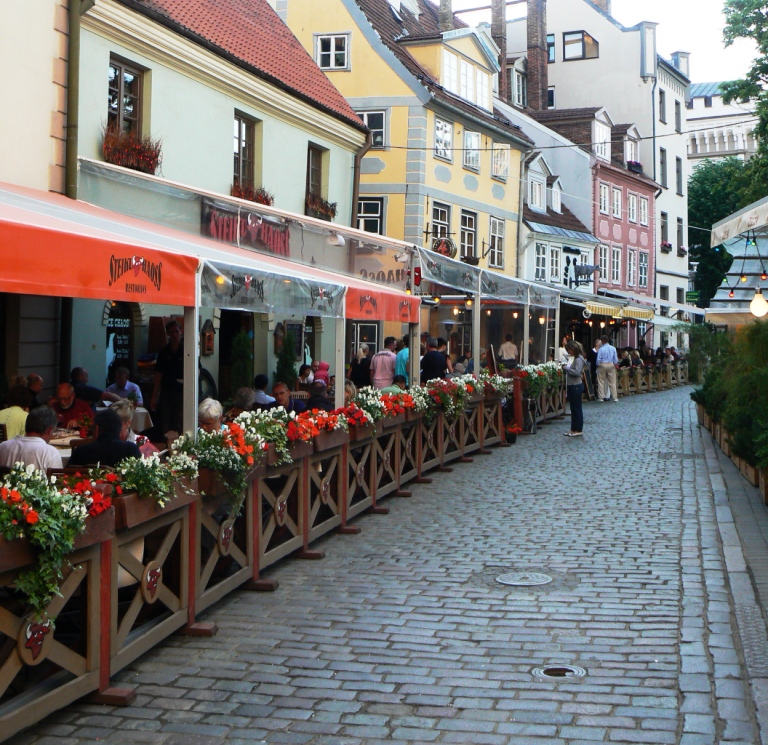
A Riga street scene
Climate
Riga has a moderate climate. July is the warmest month, with an average temperature of 17.5ºC (63.5ºF), but it can get as warm as 30ºC (86ºF). Winters are snowy, with an average temperature of -5ºC (23ºF), but can sometimes drop well below -20C (-4ºF). For more detailed weather information, visit www.worldweather.org
Getting There
Riga International Airport is located 13 kilometres (8 miles) from Riga city centre. For more information, visit www.riga-airport.com
Riga Port is a favourite call for cruise ships, usually in the summer months as part of a Baltic cruise itinerary. Many of the places of interest will be included in the shore excursions offered by the cruise line.
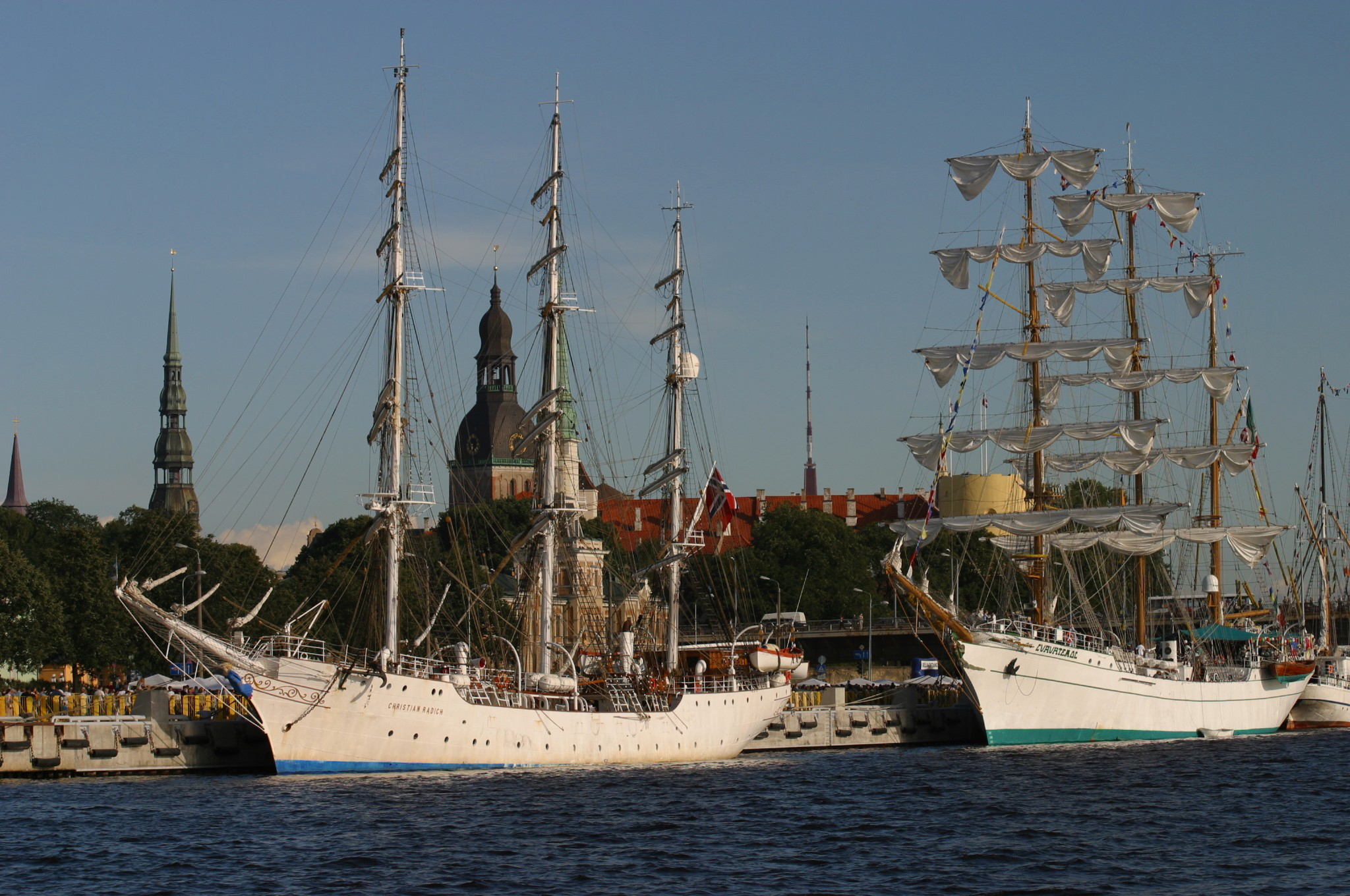
Riga Port with St Peter’s Church and the Dome in the background.
For the latest visa requirements, visit www.projectvisa.com
For everything you want to know about visiting Latvia please click on
http://www.latvia.travel/en
You may also like to read

ESTONIA - HISTORIC TALLINN
Award winning travel writer Sue Dobson introduces Tour-smart travellers to the delights awaiting you in Estonia .
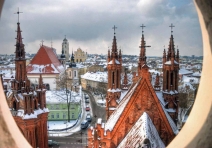
LITHUANIA - IN SEARCH OF AMBER
To tell Tour-smart readers more about amber, the fossilised tree resin, Anna Hyman headed for Vilnius in Lithuania.

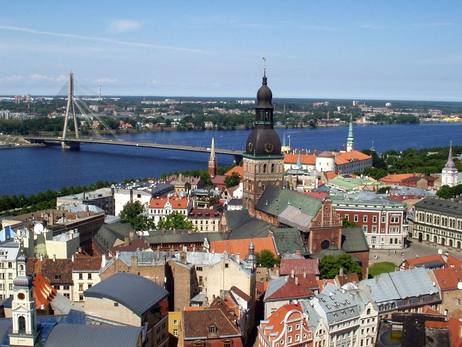
Comments